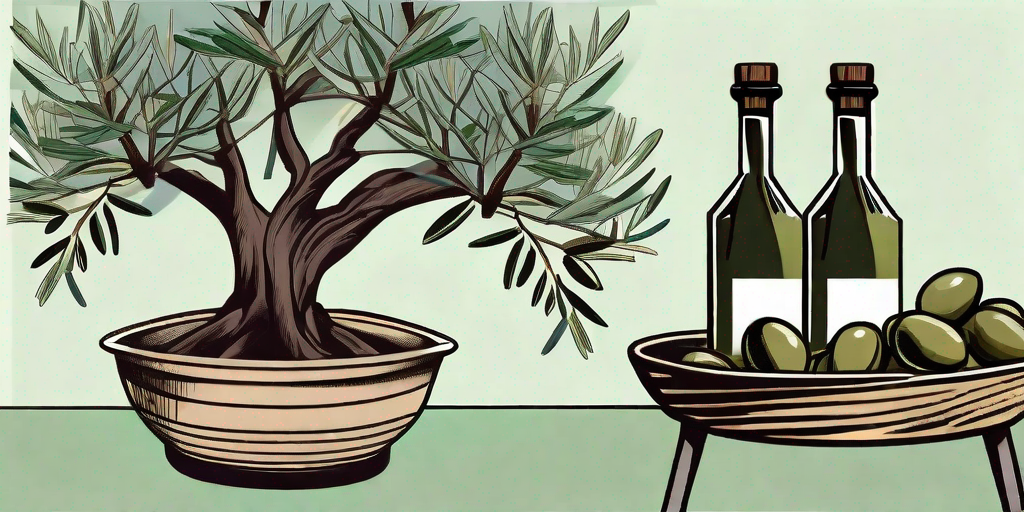
Welcome to the wonderful world of olives, where the journey from tree to table is as fascinating as it is delicious. If you've ever wondered how these little orbs of flavor make their way into your martini or onto your pizza, you're in for a treat. So, grab a handful of your favorite olives, sit back, and let's embark on this tasty adventure together.
The Olive Tree: A Brief Introduction
Before we delve into the harvesting process, let's take a moment to appreciate the olive tree itself. These hardy trees, known scientifically as Olea europaea, have been providing us with their delicious fruit for thousands of years. They're native to the Mediterranean region, but these days, you'll find them growing in all corners of the globe, from California to Australia.
One of the most fascinating things about olive trees is their longevity. Some olive trees in the Mediterranean are believed to be over 1,000 years old! That's a lot of olives over the centuries. Now, let's get down to the nitty-gritty and explore how these ancient trees produce our beloved olives.
The Life Cycle of an Olive
Like all fruit, olives have a life cycle that begins with a flower. In the spring, the olive tree blossoms, producing small, white flowers. These flowers are pollinated by the wind, and once pollinated, they begin to develop into olives.
By early summer, the olives are green and growing. They'll continue to grow throughout the summer, reaching their full size by late summer. However, they're not ready to be harvested just yet. The olives need to ripen, which can take several more months.
The Ripening Process
As the olives ripen, they change color from green to a dark purple or black. This color change is a sign that the olives are ready to be harvested. But don't be fooled by their appearance. Unlike some fruits, olives are not edible straight from the tree. They're extremely bitter and need to be cured before they're ready to eat.
The curing process involves soaking the olives in a solution of water and salt, which removes the bitterness. After several weeks of curing, the olives are ready to be enjoyed. But we're getting ahead of ourselves. Let's backtrack a bit and explore the harvesting process.
The Harvesting Process
The method of harvesting olives depends on the size of the olive grove and the variety of olives being harvested. Some olives are harvested by hand, while others are harvested using mechanical shakers. Regardless of the method, the goal is the same: to get the olives off the tree and into the curing solution as quickly as possible.
Hand harvesting is a labor-intensive process that involves picking each olive individually. It's a slow process, but it's the best way to ensure that the olives aren't damaged during harvesting. Mechanical harvesting, on the other hand, is much faster. The trees are shaken by a machine, causing the ripe olives to fall onto a net below.
From Harvest to Curing
Once the olives are harvested, they're sorted and washed. The next step is curing, which, as we mentioned earlier, involves soaking the olives in a solution of water and salt. The olives are left to soak for several weeks, during which time they ferment and lose their bitterness.
After the olives are cured, they're rinsed and packed in a brine solution to keep them fresh. At this point, they're ready to be shipped off to supermarkets and gourmet food stores around the world.
FAQs About Olive Harvesting
Now that we've covered the basics of olive harvesting, let's address some common questions about the process.
When is the best time to harvest olives?
The best time to harvest olives is in the late fall or early winter, when the olives have ripened and turned a dark purple or black color. However, the exact timing can vary depending on the variety of olive and the climate in which they're grown.
Can I eat olives straight from the tree?
No, olives straight from the tree are extremely bitter and not palatable. They need to be cured before they're ready to eat.
How long does it take for an olive tree to produce fruit?
It can take anywhere from 3 to 5 years for an olive tree to start producing fruit. However, the tree won't reach its full production potential until it's about 7 years old.
Conclusion
And there you have it, the delicious journey of harvesting olives, from tree to table. It's a process that requires patience and care, but the end result is worth it. So the next time you enjoy a tasty olive, take a moment to appreciate the journey it took to get to your table.











